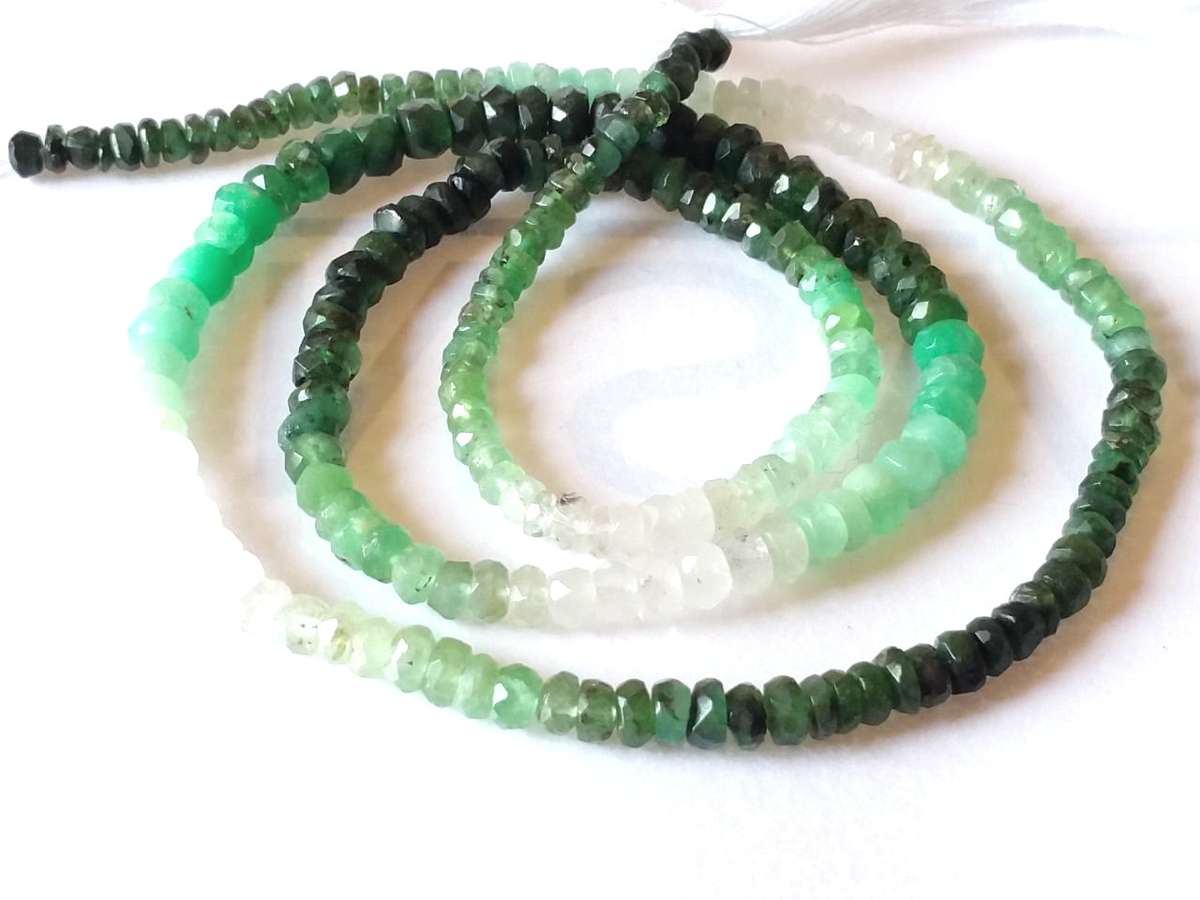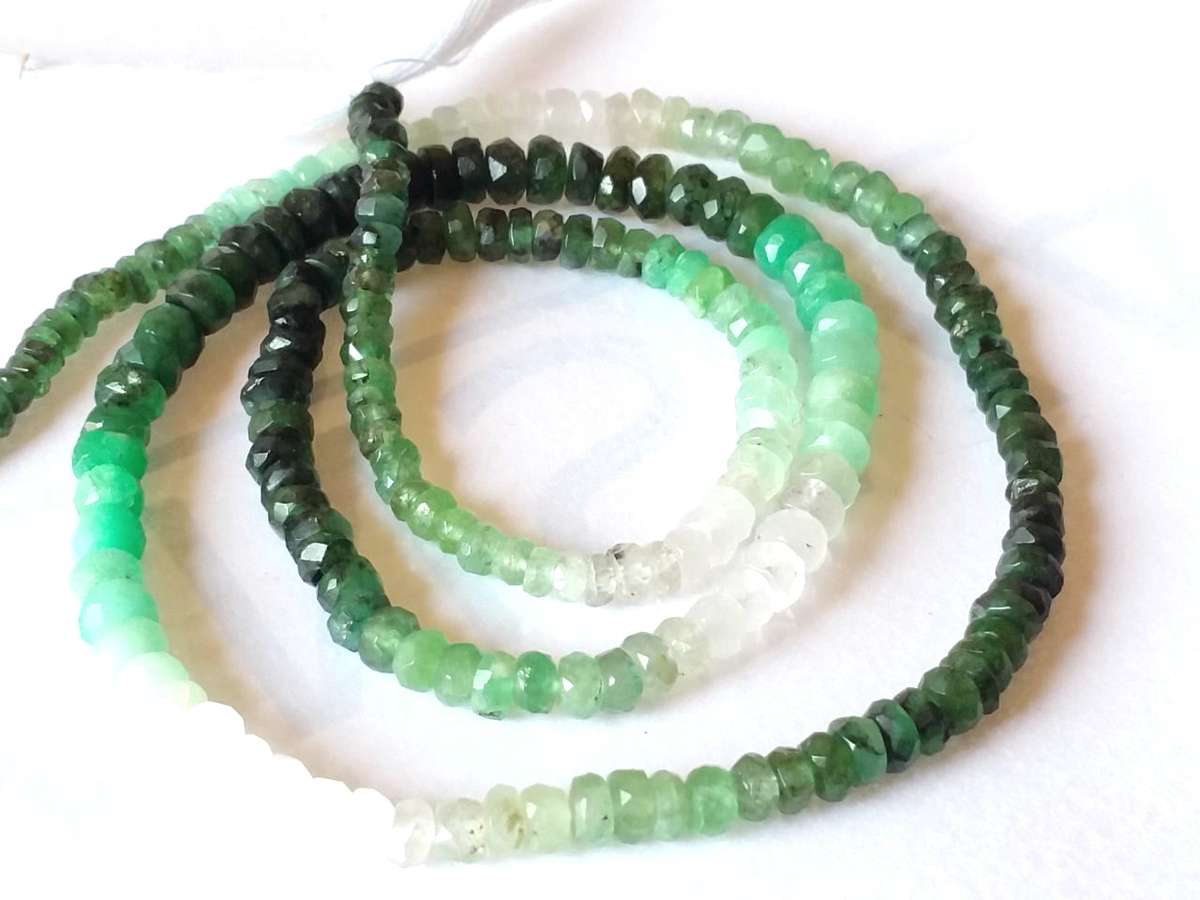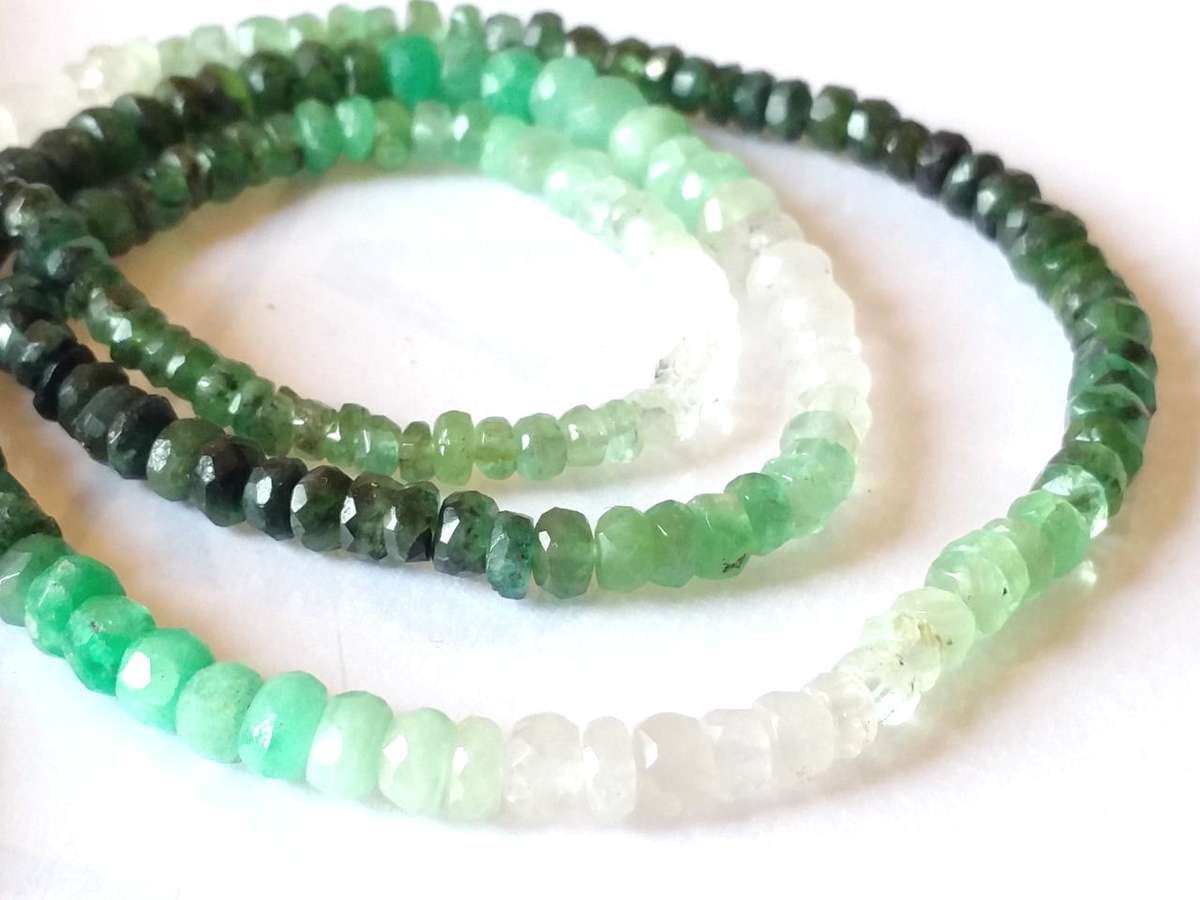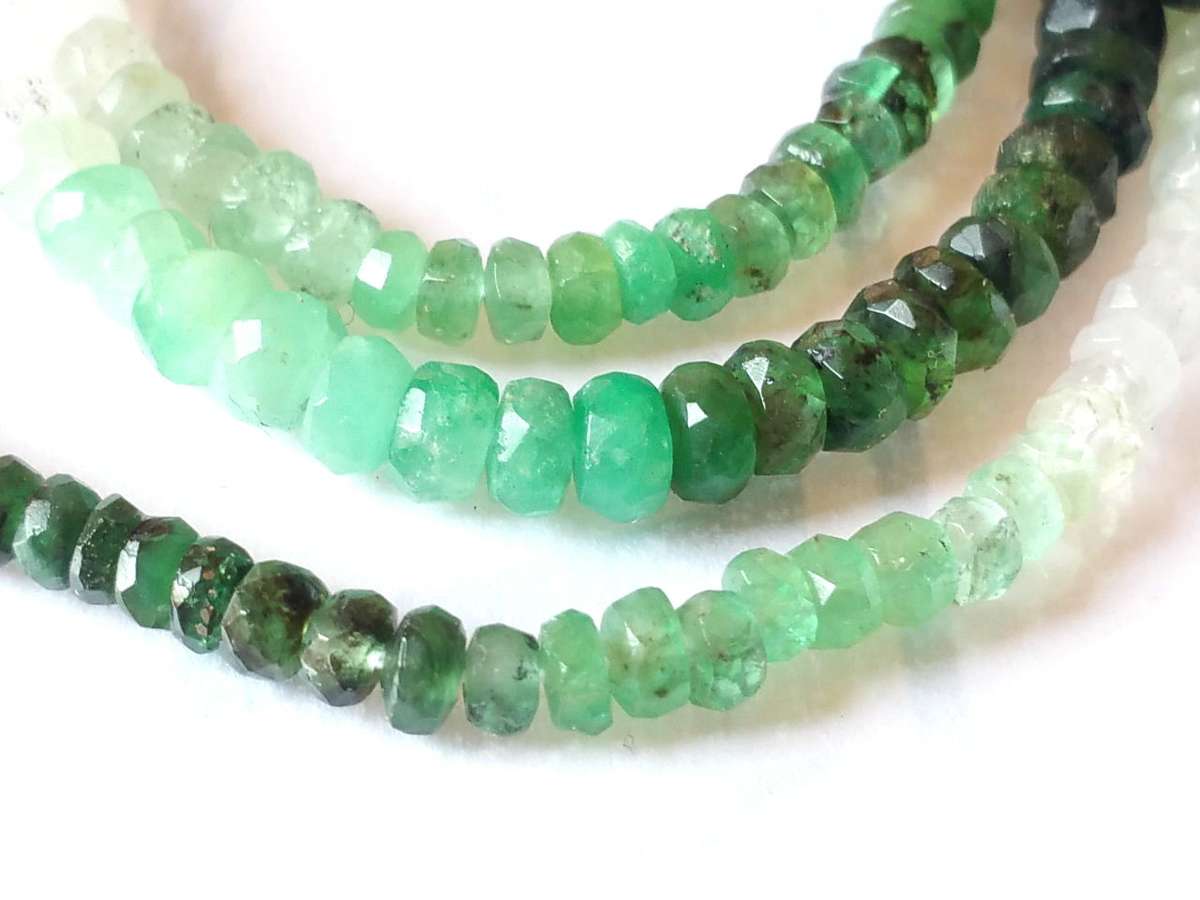Emerald has been a source of fascination and reverence in many cultures for over six thousand years, sold in the markets of Babylon as early as 4,000 B.C. It was a stone worshipped by the Incas, believed by the Chaldeans to contain a goddess, and was highly honored in all major religions for its spiritual power and beauty. Emerald was considered a symbol of eternal life in ancient Egypt, a gift of Thoth, the god of wisdom, and was a favorite jewel of Queen Cleopatra. The Emerald mines in Upper Egypt, rediscovered a hundred years ago, are some of the oldest in the world and were called Cleopatra's mines for her love of the stone. Emeralds were also talismans of Aristotle, Alexander the Great, Charlemagne, and the moguls of India. They've adorned the crowns and royal jewels of many countries for centuries, and fabulous collections and stunning gems continue to be treasured and displayed by the rich and famous today. [Mella, 84][Eason, 250][www.jewelsforme.com]
The pure exuberance of Emerald's green color has inspired the Pantone Company, the industry standard for print, fashion, beauty and dcor to declare "Emerald" the 2013 Color of the Year, describing it as "Lively. Radiant. Lusha color of elegance and beauty that enhances our sense of well-being, balance and harmony." [www.pantone.com]
Natural, transparent Emerald is one of four "precious" gemstones (including Diamond, Ruby and Sapphire), and is the green variety of Beryl, a beryllium aluminum silicate mineral colored by trace amounts of chromium and/or vanadium. Emerald occurs in hues ranging from yellow-green to blue-green, with the finest being a pure verdant green hue, medium to dark in tone. Light colored gems are usually known by the species name, Green Beryl. Most Emeralds are highly included with surface breaking fissures, so their toughness, or resistance to breakage, is usually classified as generally poor. [Simmons, 147][www.wikipedia.org]











